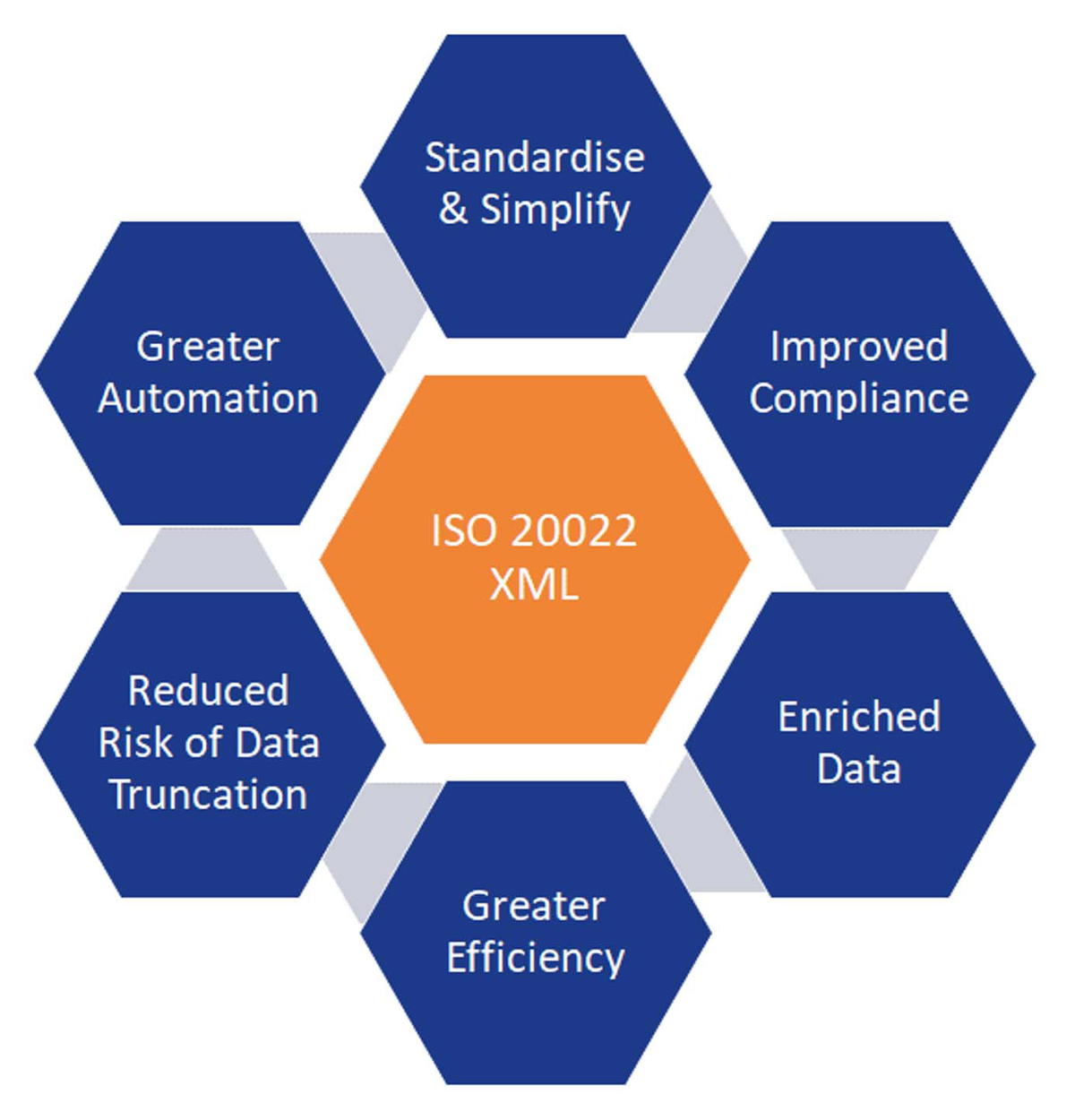

- Mark Sutton
- Senior Manager Corporate Treasury Advisory, Zanders
In a recent series of articles in TMI, Mark Sutton, Senior Manager, Corporate Treasury Adviser, Zanders, outlined the challenges associated with a certain element of the new XML Version 9 payments message. Here, he examines the move from FIN-based (MT) SWIFT messages to ISO 20022 XML (MX) messages, outlining the critical considerations from a corporate treasury perspective.
SWIFT finally started the much-publicised MT to MX migration on 20 March 2023 after a 16-month delay.
The financial sector now has just over 30 months to complete this migration plan, which will focus on selected financial messages within the interbank space. This means SWIFT will be moving from the traditional MT (FIN)-based messages, initially in the cash management space, onto ISO 20022 XML messages (MX). This is possibly the most significant disruption to global cross border payments since SWIFT first introduced electronic messages back in 1977.
While this article considers the main benefits of this multi-billion-dollar change, it also aims to provide a reality check through a corporate treasury lens by considering the fine detail around the current baseline cross border payments and reporting plus (CBPR+) service proposition.
What are the benefits?
At a high level, the benefits of ISO 20022 XML financial messaging can be boiled down into the richness of data that can be supported through the initiative. There is a very rich data structure, so each data point should have its own unique XML field. This covers not only more information around the actual payment remittance details but also improved compliance through the ability to support more structured and standardised regulatory information. It also provides a more elegant way of providing information around on-behalf-of transactions in addition to supporting local language requirements. The diagram below highlights the key benefits of ISO 20022 XML messaging.

Source: Zanders
This rich and structured data has the potential to help all stakeholders in terms of compliance, automation, reconciliation, and overall improved visibility. From a treasury lens perspective, receiving more structured data around receivables flows, primarily relating to invoice information, provides the opportunity to accelerate the cash application process, which then reduces the DSO – a key treasury working capital metric.
More structured and overall richer data will help remove the current friction in the AR process enabling greater operational and financial efficiencies. Another important benefit to corporate treasury is greater STP because the payment message will be structured and standardised, reducing the risk of costly manual repairs from the banking community.
A reality check for corporate treasury
ISO 20022 is now the de facto standard globally within the financial messaging space – SWIFT is currently estimating that by 2025, 80% of the real-time gross settlement (RTGS) volumes will be ISO 20022 based with all reserve currencies either live or having declared a live date. However, despite the huge potential that ISO 20022 XML offers, the current CBPR+ implementation appears to offer limited benefits to the corporate community at the moment.
Indeed, the Financial Stability Board (FSB) Enhancing Cross-border Payments roadmap[1] identified increasing data quality and STP by enhancing data and market as a key objective. Even the G20 made enhancing cross-border payments a priority in 2020.
It’s important to remember that data, specifically structured data, is the fuel of AI and ML. With the emerging technologies now providing the opportunity for both predictive and prescriptive analytics, one would logically expect that the migration to ISO 20022 XML would mean more data will be supported, including important payment remittance information.
This would help remove an existing friction point and enable the acceleration of the reconciliation processes. However, it’s important to note that at the moment, while the XML message could potentially support unlimited payment remittance information, only 140 characters of payment remittance details can be provided in the current CBPR+ message. This is exactly the same as in the current SWIFT MT101 FIN message.
However, there is some good news on the horizon. The CBPR+ guidelines have now included that up to 9,000 characters can be supported in the structured remittance block subject to bilateral agreement. This important enhancement is expected to take effect from November 2023 at the earliest. Given this will be subject to bilateral agreement, and the potential that richer structured data will provide in terms of both acceleration of processes and greater overall visibility, we would expect the corporate community to view this as a key requirement from banking partners.
We also see further work required around the following areas of opportunity that will help corporate treasury see more compelling positive benefits around this banking industry migration.
- Central bank reporting: The XML message is highly structured to allow a consistent and structured way of complying with both the outbound and inbound regulatory reporting requirements. The initial CBPR+ guidelines have not included this key data requirement, so the existing challenges that apply to the FIN MT messages, will also remain with the current CBPR+ implementation.
- Number of transactions within an XML file: If we purely focus on treasury, today, the MT101 relay or pass-through message can support only a single payment request due to the MT101 message structure. One of the benefits of moving to XML messaging is the flexibility and overall structure of the message, which would allow the sending of multiple payments within the same file. Again, the current CBPR+ guidelines limit the number of payments to just one per message, so no change to the current MT FIN model.
- Local language: SWIFT FIN messages use the Latin character set, which limits the usability in some countries were local language is required. While ISO 20022 XML supports local language, this feature has not currently been enabled in the CBPR+ implementation, so the current language limitations will still apply.
- FIN statement reporting: The current FIN MT940 cash management reporting is limited to one account only per MT940 statement. While the ISO 20022 XML statement supports the inclusion of multiple bank accounts, the CBPR+ guidelines and FINplus network limit the camt.053 to just one account per message.
Treasury’s main considerations
While the MT-MX migration focuses on the interbank messaging space, corporate treasuries should now have the November 2025 migration end date on their radar. Probably the most significant impact of this MT-MX migration is the mandatory requirement to include the full structured address of the beneficiary.
Based on guidance from the SWIFT PMPG, failure to provide a full structured address by this date will result in cross-border payments being rejected. However, industry discussions are continuing around the feasibility of this requirement, given the current message design does not support the significant complexities associated with the first line of an address.
A further area to consider is around the statement reporting, given the MT940 will not be supported in the interbank space from the end of November 2025. We do anticipate partner banks will continue to provide this statement format via SCORE and proprietary bank connections, but given the potential for richer and more structured information, this might provide the incentive for corporate treasury to consider migration to the camt.053 XML bank statement.
A final consideration at this stage is around the ISO 20022 XML version from a corporate treasury perspective. With the CGI-MP (Common Global Implementation – Market Practice) Group planning to release the implementation guidelines associated with the Version 9 payment message during H123, there will be a number of key questions that should be considered to determine the optimum solution design.
A date on the radar
As discussed, the ISO 20022 XML financial messages offer significant benefits to the corporate treasury community in terms of more structured and richer data combined with a more globally standardised design. However, the current MT-MX, which focuses on the interbank space, limits the materialisation of a number of these potential benefits.
It’s vital that the CBPR+ community looks at enhancing the current implementation guidelines so they create a more compelling migration proposition for the corporate community at large. Notwithstanding these limitations, corporate treasury should now have the MT-MX November 2025 migration deadline on their own radar so they can make timely and informed decisions around any future migration plan.
Key takeaways
November 2025 deadline: potential corporate impact
Whilst the MT-MX migration is currently focused on the interbank space, there are two key potential impact areas for corporates which could need to be addressed before the end November 2025:
- Full structured address. Depending on the outcome of the industry discussions, corporates might need to consider their systems, master data set-up and payment file formats to ensure compliance by end November 2025 or cross-border payments will be rejected.
- Migration to camt.053. From November 2025, only the camt.053 xml bank statement will be supported within the SWIFT interbank messaging space. Corporates that are multi-banked and use a core banking partners statement consolidation service may need to additionally migrate to the camt.053 by this migration end date.



